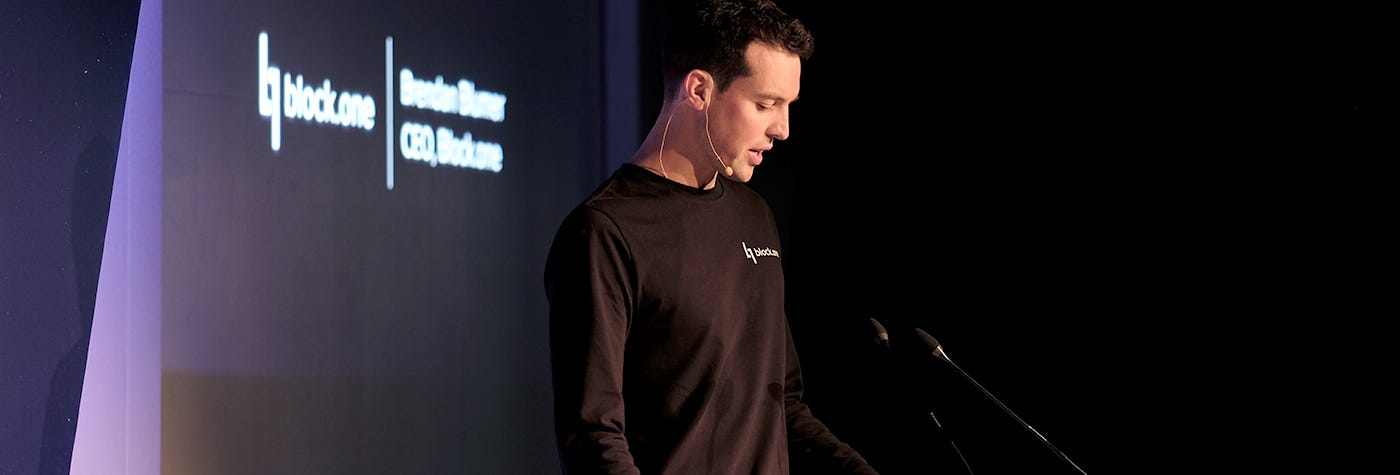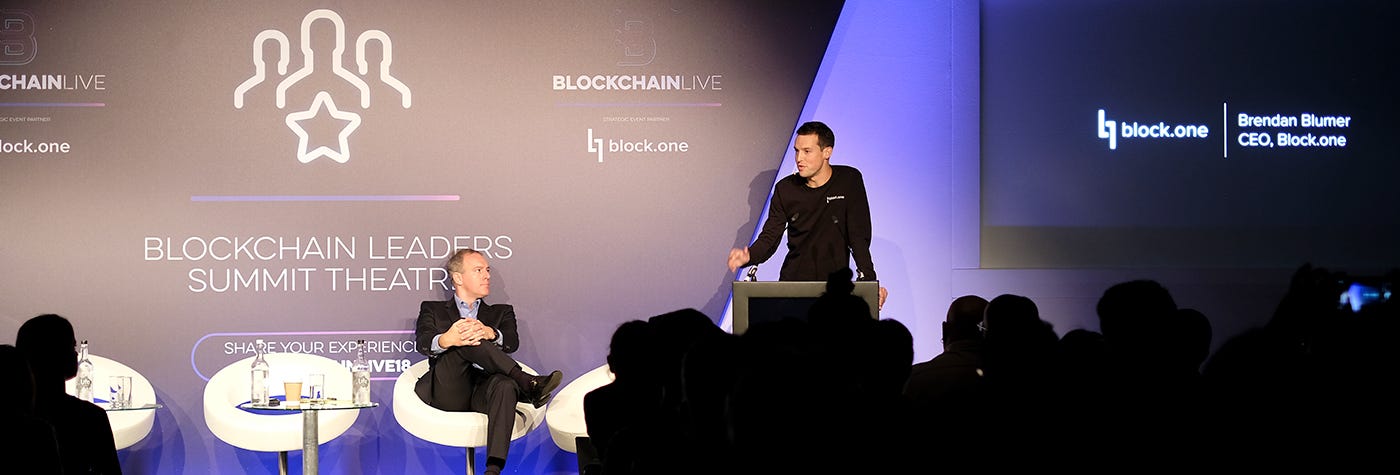Blockchain Is a Movement
Blockchain Is a Movement


Block.one CEO Brendan Blumer opens Blockchain Live 2018 at Olympia Grand, London.
Welcome everyone, it’s great to see so many familiar faces, and even more exciting to see so many new faces.
Blockchain Live is more than three times larger than when I was on this stage last year, and I feel so fortunate to be part of such a rapidly growing community and to have seen first-hand the extraordinary progress that everyone is making.
Over the course of the day, we’re going to hear from many technicians, entrepreneurs and academics at the forefront of blockchain innovation, all of whom look at this space from different perspectives and with differing views on what blockchain is, represents, and will become.
Over the last year and a half, I’ve had the privilege to lead an incredible team focused on delivering a high-performance blockchain protocol designed to be fast, free, and scalable — EOS.
Through this process I’ve been able to study the different value propositions and trade-offs that many different blockchains have to offer, and I’ve witnessed and been a part of many debates relating to technical and structural nuances on the optimal construction of a blockchain platform.
I’ve spoken and argued over the definition of decentralization itself, and have realized that although we’re all in the business of consensus, it is clear that we can’t always reach it amongst ourselves.
Although blockchain is a new technology, it welcomes everyone, with no prerequisites, and is inevitably becoming a large part of all of our futures.
I, personally, am not the most technical person in the world, but this industry has gotten to a point where the technical discussion has gone from being the primary debate to a niche interest that can often alienate its broader audience, and the things that we all commonly value.
Blockchain is simply a mutually-agreed standardization of data storage and transmission; it’s a set of constraints that developers agree to abide by in order to obtain security, auditability, and interoperability amongst peers.
Blockchain is to data what regulation is to society. Perhaps this is why, superseding the technology itself, blockchain has become a movement — a social and economic movement — and we are all united by the common understanding that this is a revolutionary technology that offers the promise of a more transparent, efficient, and interoperable world.
A promise that large organizations are one day not run on behalf of just shareholders, but run for the users themselves, safeguarding their privacy and driving value back to those that create it.
A promise that large networks of anonymous collaborators may yield more grand and efficient outcomes that defy the limits of what we even understand is possible today.
A promise that hidden adversaries may no longer thrive through obfuscation, and transparency may usher in a new era of equality and accountability.
And a promise that, over time, at the very core of our society, our governments will better represent all of us.
As many are familiar with, Bitcoin — designed originally as a digital store of value — is credited with elevating the potential of blockchain technology, and is perhaps the first neutral “money” that is issued in a relatively fair and transparent way.
It’s digital, infinitely divisible, globally transferable, highly secure, finite, peer-to-peer money that lends no bias to any government and can’t be controlled or printed by a central authority.
We all know that today the world reserve currency is the USD. USD is printed and managed by an organization called the Federal Reserve, and through inflation all holders are effectively taxed by one party.
While this has proven to be a very successful model and will surely remain an integral and stable part of our society for a long time to come, blockchain-based digital money offers the potential of neutral stores of value that offer no bias or advantage to any one group, and seek to usher in a new era of borderless equality-of-value for all societies and nations throughout the world.


As blockchains have become faster, cheaper and scalable, their applications are rapidly expanding beyond financial transactions, becoming a part of best practices for data transmission in general.
Structurally, blockchains are enabling new community-driven business models capable of autonomously rewarding developers for code contributions, and users for value creation.
We are beginning to see a future where technology platforms like Facebook, Uber, Airbnb, GitHub, insurance institutions and even banking itself, could exist without any central entity.
Where the profits of such a network would be minimal to non-existent and any excess value could be driven back to those that contribute to the prosperity of the project.
The advent of Blockchain-enabled tokenization has enabled projects to bootstrap initial funding requirements while simultaneously creating balanced economic ecosystems within the projects themselves.
We are moving from an era of working around the constrained limitations of fiat currencies, to incorporating currencies into the product design itself.
In a social network that rewards users with tokens for content creation, and requires advertisers to purchase those tokens, an economic loop is closed and the value is driven back to the users, as opposed to traditional shareholders.
Shareholders, as we currently understand them, are in many cases beginning to simply represent pricing inefficiencies that over time may yield them as less competitive to projects with perfectly priced goods and services.
All countries are different, but today, only accredited investors are able to participate in most financial opportunities.
One example of accredited investor criteria is having a minimum net worth of at least US$1,000,000 — criteria that very few can meet, and thus exclude the vast majority on the basis that they are not wealthy and/or intelligent enough.
(I will note, however, that in most cases those individuals can participate with no limitation, in lotteries, casinos, and most forms of state- and privately-run recreational gambling.)
However, tokenization offers a promise for consumers to store value in projects and services that they know and love. Projects they can actively engage in to drive their own personal prosperity.
We all have friends that are quick to adopt the “next cool thing” — that clothing brand that isn’t widely known that they proudly display as a signature of their unique and original style.
Rarely today can those early brand ambassadors become financially exposed to the products they create tremendous value for, but in a tokenized economy the activity of early discovery and evangelism can and will be a career in itself.
Although blockchain momentum has grown exponentially this year, we are still in the nascent stages of its development; and just as it was impossible to envision a generation built on social media the first time we sent an email, it’s impossible to completely understand yet the radical potential of this new foundational technology, but we know it promises transformative progress.
So while we move through the week and engage in healthy debate and collaborative competition, let this promise of progress keep us all reminded of the shared excitement of a better future that has brought us together in the first place; a blockchain future.
Welcome everyone to Blockchain Live; let’s make it a good one.
